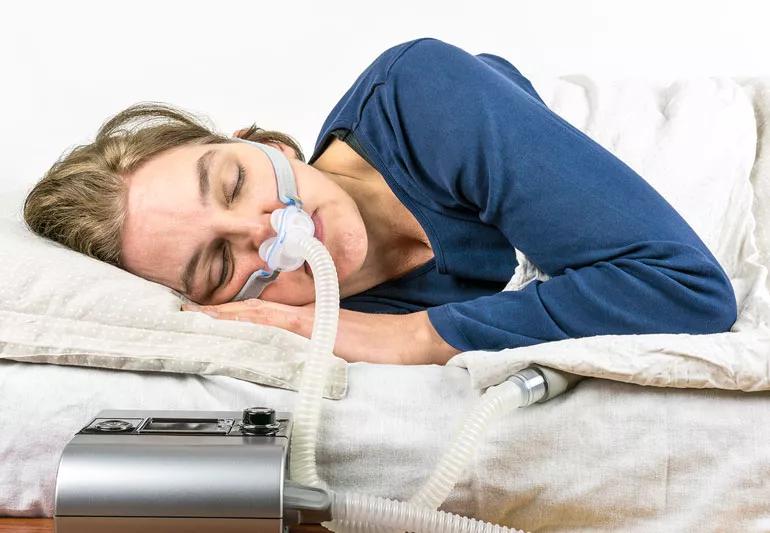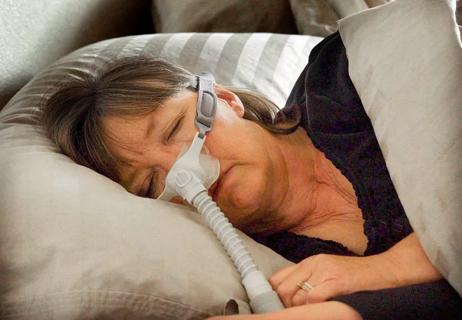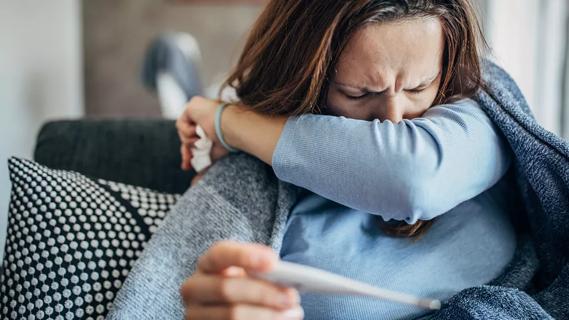Find out how you can keep yourself and those around you safe

Imagine always feeling tired.
Advertisement
Cleveland Clinic is a non-profit academic medical center. Advertising on our site helps support our mission. We do not endorse non-Cleveland Clinic products or services. Policy
You think you’re getting enough sleep, but you really aren’t. What you might not realize is that your breathing is being interrupted throughout the night. Your airway might close or your brain isn’t controlling your breathing properly so you can rest. And as this occurs, your vital organs are deprived of oxygen and your heart doesn’t work the way it should.
It’s a frightening thought, but a tough reality for about 22 million Americans who suffer from sleep apnea.
There are two main types of sleep apnea, obstructive and central. According to the American Sleep Apnea Association, a good majority of those who suffer from this disorder (about 80%) are dealing with moderate to severe cases of undiagnosed obstructive sleep apnea.
With obstructive sleep apnea, the airway becomes blocked when the soft tissue near the back of the throat collapses while a person is sleeping. With central sleep apnea, the brain simply doesn’t give the muscles the signals needed to breathe.
Thankfully, sleep apnea doesn’t have to be a complete dream killer. Positive Airway Pressure, or PAP therapy, makes it possible for people with sleep apnea to rest without interruption.
CPAP machines, Bi-Level PAP machines or Adaptive-Servo Ventilation (ASV) machines help deliver PAP therapy. These machines deliver the right amount of air needed to keep the airway open during sleep.
Advertisement
While PAP machines can make nights so much better, the arrival of the coronavirus (COVID-19) might have users stressing about them a little. So, is your risk of getting or transmitting the virus greater if you use a PAP machine, or should you even continue to use your machine if you are infected? With the help of sleep disorders expert, Colleen Lance, MD, we’ll answer these questions.
“PAP therapy is an open system that can generate contact, droplet, and airborne COVID-19, increasing the risk of transmission like other procedures such as tracheal intubation, noninvasive ventilation, and cardiopulmonary resuscitation,” says Dr. Lance.
She explains that for asymptomatic (not showing any symptoms) patients, PAP therapy might increase the risk for the transmission of COVID-19 to others who might be in the same space.
If you share a bedroom and have been exposed to someone with COVID-19, it’s a good idea to use your PAP machine in another room until you know you’re in the clear. Dr. Lance also recommends using a separate bathroom if possible.
As for the risk of the virus being re-transmitted by your PAP machine’s tubing, filters or mask, that is still unknown at this time.
Dr. Lance suggests that if you use a PAP machine for the treatment of obstructive sleep apnea, you’ll want to check with your medical provider to see if it’s OK to stop using it until you’re no longer contagious. This way, your provider can inform you of alternative methods that will help you sleep comfortably until you can use your machine again.
“Patients should be counseled about the risks of the short-term discontinuation of PAP therapy,” Dr. Lance explains. She says that by talking to your healthcare provider, you’ll know if you’ll be up against sleepiness throughout the day or cardiovascular issues.
If it’s recommended that you continue to use your PAP machine, you’ll need to quarantine yourself away from others. Once your symptoms pass, Dr. Lance strongly suggests changing your mask, tubing, filters and any other disposable accessories.
In the event that you need to go to the hospital, Dr. Lance recommends taking your PAP machine and accessories with you.
When’s the last time you cleaned your PAP machine? If that question made you cringe, it’s time.
Cleaning your machine not only can reduce the chances of bacteria exposure, but it also can help prevent odors, allergy or sinus issues and pneumonia. Keeping your machine clean can also ensure that it continues to work properly.
You don’t have to clean your machine and accessories every day, but cleaning them once a week is ideal. When it’s time to sanitize your PAP machine, refer to the cleaning instructions provided in your user’s manual. If you pitched it long ago, check the manufacturer’s website for maintenance tips.
Advertisement
If you can’t track this information down, here are some general PAP machine cleaning tips that can help.
Remember, never use harsh chemicals or household cleaners to sanitize your PAP machine. Doing so can lead to lung irritation or illness and damage your equipment.
Advertisement
Learn more about our editorial process.
Advertisement

It’s OK to take a break while you’re sick, but using your PAP device could help you feel better

The short answer: It’s complicated, but the basic care precautions still prevail, like washing your hands and isolating if you’re sick

They can feel like a typical headache or a migraine headache, but the pain can last for weeks to months

Any large social gathering — from a family birthday party to an indoor music concert — has the potential to spread serious infection

It’s important to connect with a healthcare provider, get quality sleep and balance your activities with your energy levels

Symptoms can overlap and be hard to distinguish, but there are some telltale differences

Just like the flu, COVID-19 will continue to evolve every year

It’s best to treat flu-like symptoms as if you have COVID-19

Type 2 diabetes isn’t inevitable with these dietary changes

Applying a hot or cold compress can help with pain